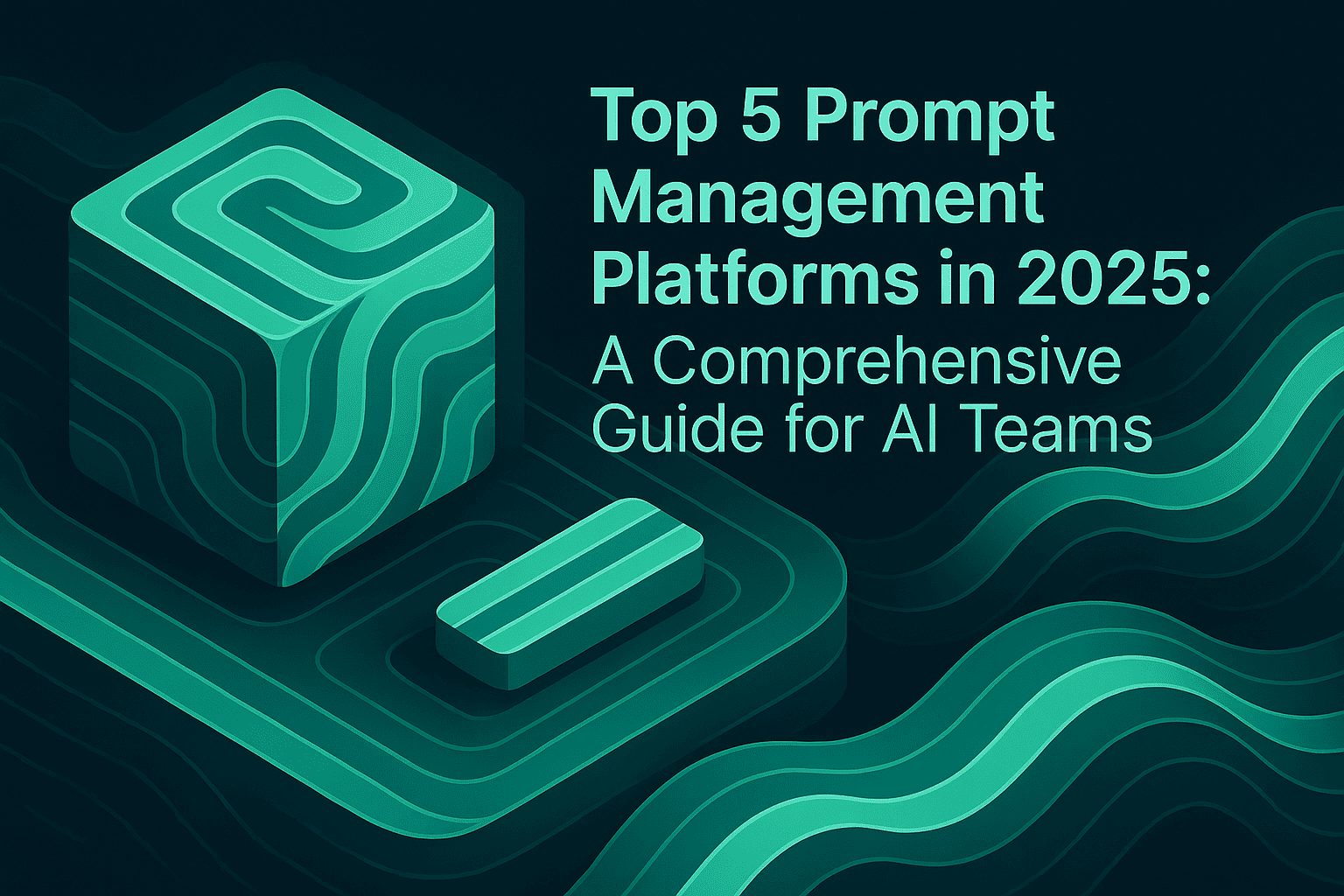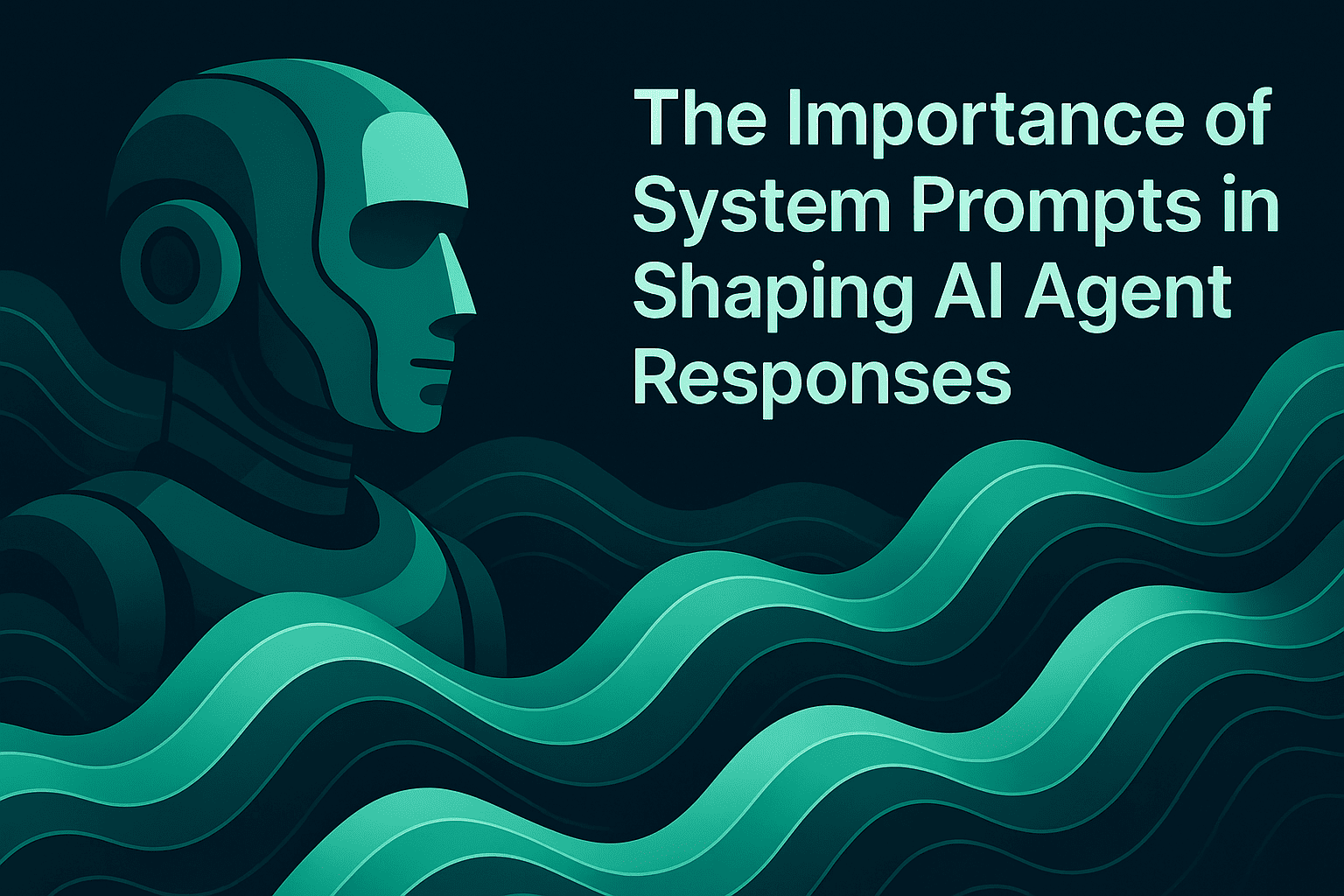Streamlining Prompt Management for Enterprise AI Teams

As organizations scale their AI initiatives, prompt management has emerged as a critical discipline for teams building LLM-powered applications. Effective prompt management ensures consistent, safe, and high-quality AI outputs while enabling rapid iteration and collaboration at scale. However, many teams struggle with ad hoc prompt handling, leading to version control chaos, inconsistent results, and significant operational inefficiencies.
For large enterprise AI teams deploying agents across multiple products and use cases, treating prompts as first-class assets that require versioning, testing, and governance becomes essential rather than optional. Prompts are used at scale, running millions of times, and must be hardened and optimized like production code. This article explores the unique challenges of prompt management at scale and practical strategies for streamlining these workflows across large engineering and product teams.
The Challenge of Scaling Prompt Management
Traditional software development has well-established practices for version control, code review, and deployment pipelines. However, prompts exist in a different paradigm that creates unique management challenges, especially for large teams working on multiple AI applications simultaneously.
Version Control and Collaboration Complexity
Cross-functional teams need to collaborate on designing prompts, experimenting, and tracking changes over time. When multiple engineers, product managers, and domain experts contribute to prompt development, the lack of proper versioning creates significant friction. Teams often resort to copying prompts into shared documents, Slack threads, or code comments, leading to confusion about which version represents the current production state.
The problem compounds when teams need to roll back to previous prompt versions after identifying issues in production. Without structured version control, identifying what changed, when, and why becomes a time-consuming investigation that slows incident response.
Testing and Optimization at Scale
AI outputs are highly sensitive to prompt wording, structure, and context. Even minor changes to prompts can significantly impact response quality, making systematic testing essential. However, testing prompts across hundreds or thousands of scenarios manually is impractical for large teams managing multiple AI applications.
Tools that cut iteration time by 30% and improve output consistency by 25% through features like versioning systems for tracking changes and collaborative editing for real-time feedback become critical infrastructure for production AI teams. Without these capabilities, teams waste significant engineering time on manual testing and struggle to maintain quality standards across prompt iterations.
Security and Governance Requirements
As AI agents become more autonomous and handle sensitive data, security considerations around prompt management intensify. Prompt injection attacks can manipulate AI systems into outputting harmful, restricted, or unintended responses, bypassing traditional guardrails. With over 600,000 prompts collected in red-teaming competitions, organizations face a continuously evolving threat landscape where adversaries discover new bypass techniques regularly.
Large teams require governance frameworks that ensure prompts adhere to security policies, data handling requirements, and compliance standards. Implementing role-specific prompt templates that enforce safe AI behaviors reduces injection risks, but managing these templates across dozens of applications and teams requires specialized tooling.
Cost and Performance Optimization
Prompts directly impact the computational resources required for AI applications. Inefficient prompts can increase token usage, latency, and API costs significantly. For large teams running millions of inference requests daily, even small prompt optimizations can translate to substantial cost savings.
However, optimizing prompts for cost without degrading quality requires systematic experimentation comparing output quality, latency, and cost across various combinations of prompts, models, and parameters. Teams need platforms that simplify these tradeoffs rather than forcing manual analysis of experiment results.
Essential Components of Effective Prompt Management
Addressing these challenges requires implementing structured workflows and tooling that treats prompts as critical infrastructure assets. Several key components enable effective prompt management at scale:
Centralized Prompt Repository
Large teams need a single source of truth for all production prompts, development variations, and experimental iterations. A centralized repository provides visibility into which prompts are deployed where, who owns them, and their performance characteristics. This eliminates the scattered documentation problem that plagues many organizations.
Centralization also enables teams to establish prompt reuse patterns, sharing effective techniques across applications rather than duplicating effort. When multiple teams independently discover similar prompt patterns, a central repository facilitates knowledge transfer and standardization.
Version Control and Audit Trails
Robust version control for prompts must track not just the prompt text but also associated metadata including deployment parameters, model configurations, and performance metrics. Tracking prompt changes and comparing versions enables teams to understand the impact of modifications over time.
Audit trails become essential for compliance requirements, enabling organizations to demonstrate what prompts were active during specific time periods and trace decisions back to their sources. For regulated industries, this documentation proves critical during audits or investigations.
Integrated Testing and Evaluation
Prompt evaluation frameworks should integrate directly with prompt management workflows, enabling teams to automatically assess new prompt variations before deployment. Running automated evaluations on prompt variants identifies the best-performing versions based on quality metrics, safety checks, and performance characteristics.
Evaluation must operate at multiple levels of granularity—from individual responses to complete agent trajectories—to ensure prompts perform well across diverse scenarios. Teams benefit from access to both off-the-shelf evaluators and the ability to create custom evaluators suited to specific application needs.
Collaborative Editing and Review
Large teams require collaborative workflows where multiple stakeholders contribute to prompt development. Engineers may focus on technical optimization, product managers on user experience alignment, and domain experts on accuracy and appropriateness for specific contexts.
Collaborative editing with real-time feedback streamlines this cross-functional work, while review workflows ensure changes undergo appropriate scrutiny before production deployment. Features like prompt diffing help reviewers understand exactly what changed between versions.
Deployment and Experimentation Infrastructure
Advanced prompt engineering platforms enable rapid iteration and experimentation without requiring code changes. Teams can deploy prompts with different deployment variables and experimentation strategies, running A/B tests to validate improvements before full rollout.
This infrastructure allows product teams to drive AI lifecycle optimization without creating engineering dependencies. When product managers can independently test prompt variations and measure impact, teams move faster and iterate more frequently.
Best Practices for Large AI Teams
Implementing effective prompt management requires both technical infrastructure and organizational practices that scale with team size and application complexity:
Establish Clear Ownership
Every production prompt should have a designated owner responsible for its performance, maintenance, and evolution. Clear ownership prevents prompts from becoming orphaned or neglected as team members change roles or leave the organization.
Ownership includes responsibility for monitoring prompt performance, responding to incidents, and incorporating feedback from users and stakeholders. Large teams often assign ownership at the feature or product level rather than individual prompts.
Implement Prompt Standards and Templates
Standardizing prompt structures across applications improves consistency and reduces cognitive load for team members working on multiple AI products. Leading with clear, concise instructions helps AI models understand tasks upfront, reducing ambiguity and improving output relevance.
Organizations should develop libraries of prompt patterns that address common use cases, security requirements, and output formatting needs. When teams start from tested templates rather than blank slates, they avoid repeating work and inherit proven practices.
Require Testing Before Deployment
No prompt changes should reach production without passing automated evaluations and review processes. Testing requirements should scale with the criticality of the application—customer-facing agents require more rigorous validation than internal tools.
Organizations should establish minimum quality thresholds that prompts must meet, including accuracy metrics, safety checks, and performance requirements. Simulation frameworks enable teams to test agents across hundreds of scenarios before deployment, catching issues early.
Monitor Production Performance
Prompt management extends beyond deployment into ongoing monitoring and optimization. Teams need observability infrastructure that tracks prompt performance in production, identifying when outputs degrade or costs escalate unexpectedly.
Real-time monitoring enables teams to quickly identify and respond to issues, rolling back problematic prompts or adjusting configurations to restore quality. Production insights should feed back into the development process, informing future prompt iterations.
Facilitate Knowledge Sharing
Large organizations benefit from mechanisms that enable teams to learn from each other's prompt engineering experiences. Regular knowledge-sharing sessions, internal documentation of effective techniques, and prompt pattern libraries help disseminate best practices.
When teams discover effective approaches to common challenges like reducing hallucinations or improving response formatting, sharing these learnings organization-wide multiplies their impact.
How Maxim Streamlines Prompt Management
Building production-ready AI applications at scale requires comprehensive tooling that addresses the complete prompt lifecycle from experimentation through production monitoring.
Unified Prompt Development: Maxim's Playground++ provides an integrated environment for advanced prompt engineering, enabling rapid iteration and experimentation. Teams can organize and version prompts directly from the UI for iterative improvement, maintaining clear history of how prompts evolved and why changes were made.
Seamless Integration: Connect with databases, RAG pipelines, and prompt tools seamlessly, enabling teams to test prompts in realistic contexts that mirror production environments. This integration eliminates the gap between development and deployment, ensuring prompts that work in testing also perform well in production.
Intelligent Experimentation: Deploy prompts with different deployment variables and experimentation strategies without code changes, accelerating iteration cycles. Teams can compare output quality, cost, and latency across various combinations of prompts, models, and parameters, simplifying decision-making about which configurations to deploy.
Cross-Functional Collaboration: Unlike platforms that provide control exclusively to engineering teams, Maxim's user experience is anchored to how product and engineering teams collaborate seamlessly. Product managers can independently test prompt variations and measure impact without requiring engineering resources for each experiment.
Comprehensive Evaluation: The platform integrates with Maxim's evaluation framework, enabling teams to measure the quality of prompts quantitatively using AI, programmatic, or statistical evaluators. Visualize evaluation runs on large test suites across multiple versions to understand performance differences clearly.
Production Observability: Once deployed, track prompt performance in production using Maxim's observability suite. Monitor real-time logs, run periodic quality checks, and get automated alerts when prompt performance degrades, enabling rapid response to issues.
Data-Driven Improvement: Continuously curate and evolve datasets from production data to improve prompt performance over time. Import datasets easily, enrich them through human feedback, and create data splits for targeted evaluations and experiments.
Conclusion
As AI applications become more sophisticated and organizations deploy agents across more use cases, effective prompt management transitions from nice-to-have to mission-critical infrastructure. Large teams cannot rely on ad hoc approaches that worked for early experiments when scaling to production systems handling millions of requests.
Success requires treating prompts as first-class assets with proper version control, testing, governance, and monitoring. Organizations that implement centralized repositories, establish clear ownership, require rigorous testing, and maintain production observability will build more reliable AI applications while enabling their teams to iterate faster.
The investment in prompt management infrastructure pays dividends through improved consistency, reduced incidents, faster iteration cycles, and better cross-functional collaboration. Teams equipped with proper tooling can focus on building innovative AI experiences rather than wrestling with version control chaos or manual testing overhead.
Ready to streamline prompt management for your AI team? Schedule a demo to see how Maxim's end-to-end platform accelerates prompt development and optimization, or sign up to start organizing and testing your prompts today.


